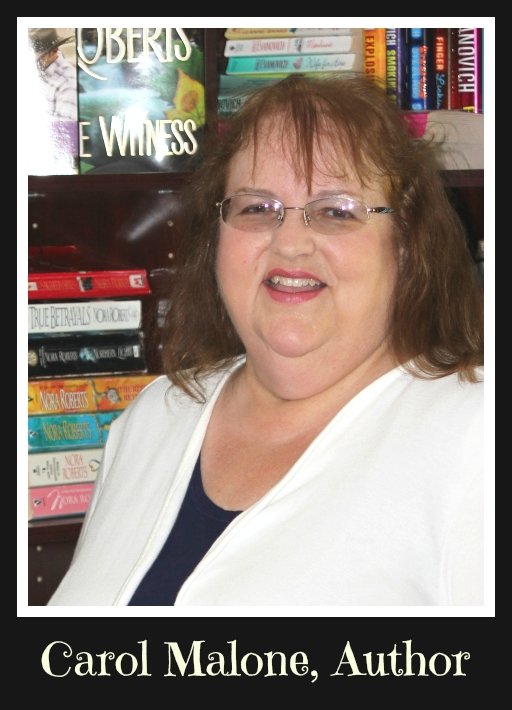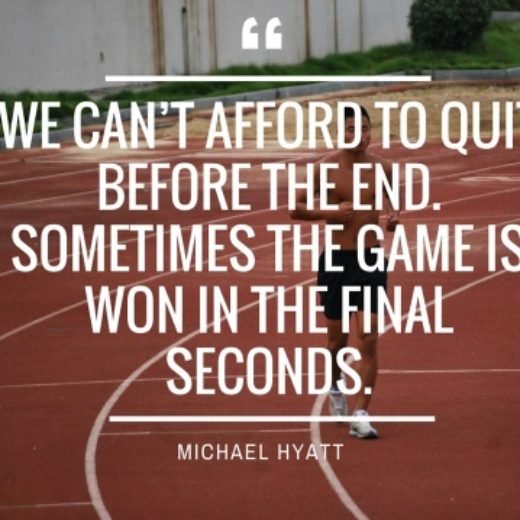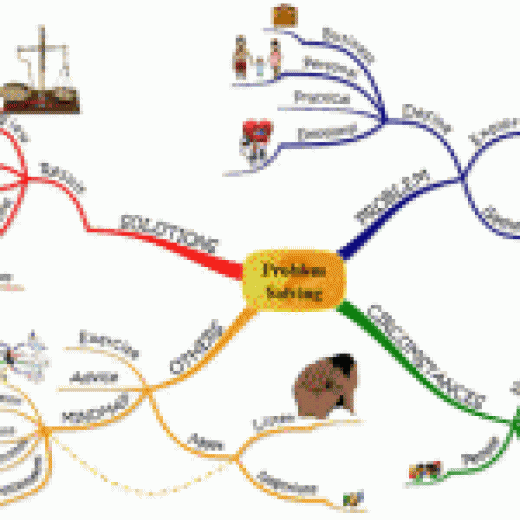Does Your Brain Always Storm With Creative Juices? by Carol Malone
 Join us today as authorpreneur, ghostwriter, book, and creativity coach in training, Carol Malone, studies the process for helping to get herself unstuck in her current WIP. She gives some advice on how to brainstorm your novel’s storyline. Enjoy!
Join us today as authorpreneur, ghostwriter, book, and creativity coach in training, Carol Malone, studies the process for helping to get herself unstuck in her current WIP. She gives some advice on how to brainstorm your novel’s storyline. Enjoy!
***
Even the best writers can get stuck in a manuscript and not know where to direct their characters for the maximum punch. On occasion, I’ve found myself staring at the blank screen after having written ten or fourteen solid chapters and wonder where in the world my characters want or need to go next. In other words, they’ve stopped talking to me, the author, and they’ve definitely stopped talking to each other. That’s bad. So, what’s the solution?
Are you stuck in your creativity and need some new input?
I’ve often been stuck and needed a new thought or idea or direction in which to take my story, or to get inside my characters’ heads better.
Do you have certain techniques, or have you discovered writing gurus who have addressed the phenomenon of brainstorming?
I’ve been doing a lot of research on the subject and found a lot of advice and great tips for setting about to do your brainstorming, be it for a small scene in your book or the larger plot for the entire book.
What exactly is brainstorming?
Where writing the next great masterpiece is concerned, most of us don’t run to our computers or tablets and type away having every word fall magically into place in a cohesive, spellbinding story.
Sometimes it takes days or weeks of thinking about a storyline, dreaming up what type of characters we want to populate our stories, and generate ideas that will push our novels forward.
When these concepts run through our heads before we can jot down one story idea, a character or two, or a basic plot this is called “brainstorming.”
I’m sure we’ve all done a little brainstorming in various forms, alone or with a group.
As children, we created our own story worlds to play in. How many, by way of hands, have ever tossed an old quilt over a card table and played fort. Come on now, raise those hands.
Our little brains were working overtime creating scenes and worlds and characters in our childish play. Our imaginations were allowed to run free. Ah, to be a child again.
Brainstorming can be like child’s play
Now I don’t mean it’s all fun and games. Sometimes it’s the opposite. It can be a struggle to wrangle thoughts out of an over-taxed, over-stimulated brain.
In her article “5 Brainstorming Techniques for Writers: A Guest Post” by Linda Craig featured on Kaitlin Hillerich’s website, Ink and Quills, Linda gives ideas on how to focus our brainstorming.
Here is the meat of what she said mixed up with some of my ideas:
- Skim-Read
You can try quickly skim-reading a book from your library. Sometimes just the chapter titles are enough to get you going. Needless to say, you should never copy another author’s ideas. But this technique can spark your imagination and maybe even guide your impressions in an unexpected direction throughout the brainstorming session.
- Use Contradictions
If your hero is too perfect, brainstorm for a contradiction to that perfection. Give him/her complexity. Also, if completely stuck, think about what would contradict the main idea or theme of your story. If you’re writing about the forever kind of love, flip the traditional on its ear with characters who distort our traditional concept of love in every way.
- Read Similar Stories
Reading from similar genre authors will take a bit longer in your brainstorming as you see what’s being published out there today. Find an author who covers similar ideas to yours and brainstorm about ways to improve your plot with an unexpected turn or twist.
- Use Active Imagination
Pick some writers that you admire, be they modern or historical, imagine them as they are with their personalities. Then conduct a meeting with them and allow your creativity and intuition to take over. Ask them what they think about your plot. How would they develop your characters? Simply allow them to take part in your brainstorming. Just like we did as kids – use your imagination.
- Try Rolestorming
Put yourself in the shoes of another person and imagine what they would say to your story ideas. It’s like a child pretending to be Captain America and gauging how he would respond to your plot.
What is the best method to generate real ideas?
Do you know “how” to brainstorm?
Has anyone ever said, “Let’s sit down and brainstorm,” only for you to scratch your head and say, “How do we do that?”
I’ll admit, I needed to be guided in my last go-round with brainstorming. I needed to focus my thoughts on the problems at hand.
I had written about fourteen chapters and thought I had the characters well on their way to finding romance. But then they just stopped moving forward.
I love the steps put forth by Jonathan Aguila in his short article, “Brainstorming,” on the website The Writing Process.
Brainstorming instructions:
- Make a list (or lists) of every idea you can think of about your subject.
- Don’t write in complete sentences, just words and phrases, and don’t worry about grammar or even spelling.
- Again, do NOT judge or skip any idea, no matter how silly or crazy it may initially seem; you can decide later which ones are useful and which are not, but if you judge now, you may miss a great idea or connection.
- Do this for 15, 20, or (if you’re on a roll) even 30 minutes – basically until you think you have enough material to start organizing or, if needed, doing research.
To apply what I’m telling you, I decided to brainstorm on my next WIP – work in progress. I was surprised by the ideas that came to me.

I have more than enough ideas to move my billionaire and his “nearly” lady love forward, with conflict coming at them from all directions, especially the internal emotional kind.
Remember, as you brainstorm, don’t stop to analyze your ideas, just jot them down as quickly and as creatively as you can.
I found some excellent advice for you as you approach your brainstorming session. This great idea comes from Cris Freese who wrote “How to Brainstorm: Give Your Brain Free Rein,” on the Writers Digest website.
Cris said: “At this point, keep asking yourself what the story is about and what needs to happen.
Concentrate on the broader aspects, but write down any subplots, characters, or scene ideas that occur—and they will.
Avoid falling too deeply into one aspect, as doing so may deflect you from creating the broader strokes.
When the session feels complete, tuck all the pages away and think about something else.
Do, however, thank your brain for being brilliant – and reward it with a glass of wine, a hot bath, or a piece of chocolate perfection.”
What comes after the brainstorming?
If you end up with a nice grouping of ideas, now comes the time to put them in some sort of map or outline showing progress in the story going from one strong beat of action or conflict to the others and filing in between.
Take the least of the challenges your characters face and list them first and then proceed on to the worst thing that will happen – or in most novel structures – the Black Moment.
Then if you’re not sure about the location of your setting, it’s time for research. Visit your local library or the web for the city or country in which you wish to set you story. Review the social structure of the society, how people dress, talk, what they eat, and how they support themselves.
I find research is my favorite tool for brainstorming, but have to limit myself to how much time I’ll spend on it because I can get deeply involved and forget to write my story.
 Make sure during your brainstorming sessions to jot every idea down no matter how silly or simple it might seem. I challenge you to try a brainstorming session either for a new novel you’re thinking of starting, or if you’re stuck in the middle of a current storyline and ideas aren’t flowing.
Make sure during your brainstorming sessions to jot every idea down no matter how silly or simple it might seem. I challenge you to try a brainstorming session either for a new novel you’re thinking of starting, or if you’re stuck in the middle of a current storyline and ideas aren’t flowing.
Brainstorm on how to shake things up for your characters. Put them in dire circumstances, challenge their emotional states, push them to the limit and imagine how they’ll respond or react. Don’t let them off the hook for an easy ending.
If your readers see how your characters struggle, it will give them courage to face their own life. And maybe, the ideas we come up with will spark the ideas of the next generation of writers and readers.
***
ABOUT CAROL MALONE
 Award-winning author, Carol Malone writes new pulp-fiction suspense kissed with romance to rocket readers into adventure. When not hammering out new tales, Carol is reading, or watching Dodger Baseball, or reruns of Psyche. She lives with her sci-fi author husband on the coast of California where she enjoys the mild weather all year round. Carol adores connecting with her readers and invites them to chat about romance, food, and sports on her website.
Award-winning author, Carol Malone writes new pulp-fiction suspense kissed with romance to rocket readers into adventure. When not hammering out new tales, Carol is reading, or watching Dodger Baseball, or reruns of Psyche. She lives with her sci-fi author husband on the coast of California where she enjoys the mild weather all year round. Carol adores connecting with her readers and invites them to chat about romance, food, and sports on her website.
Website: http://carolmalone.net/
Facebook: https://www.facebook.com/carolmaloneauthor
Twitter: https://twitter.com/CarolAnneMalone
Fight Card Romance: Ladies Night: http://amzn.to/1sm0Xkf
Fight Card Romance: Ladies Night Christmas: http://amzn.to/1yOtlAH
Summer Holiday: http://www.amazon.com/dp/B00XFTTN4M/






